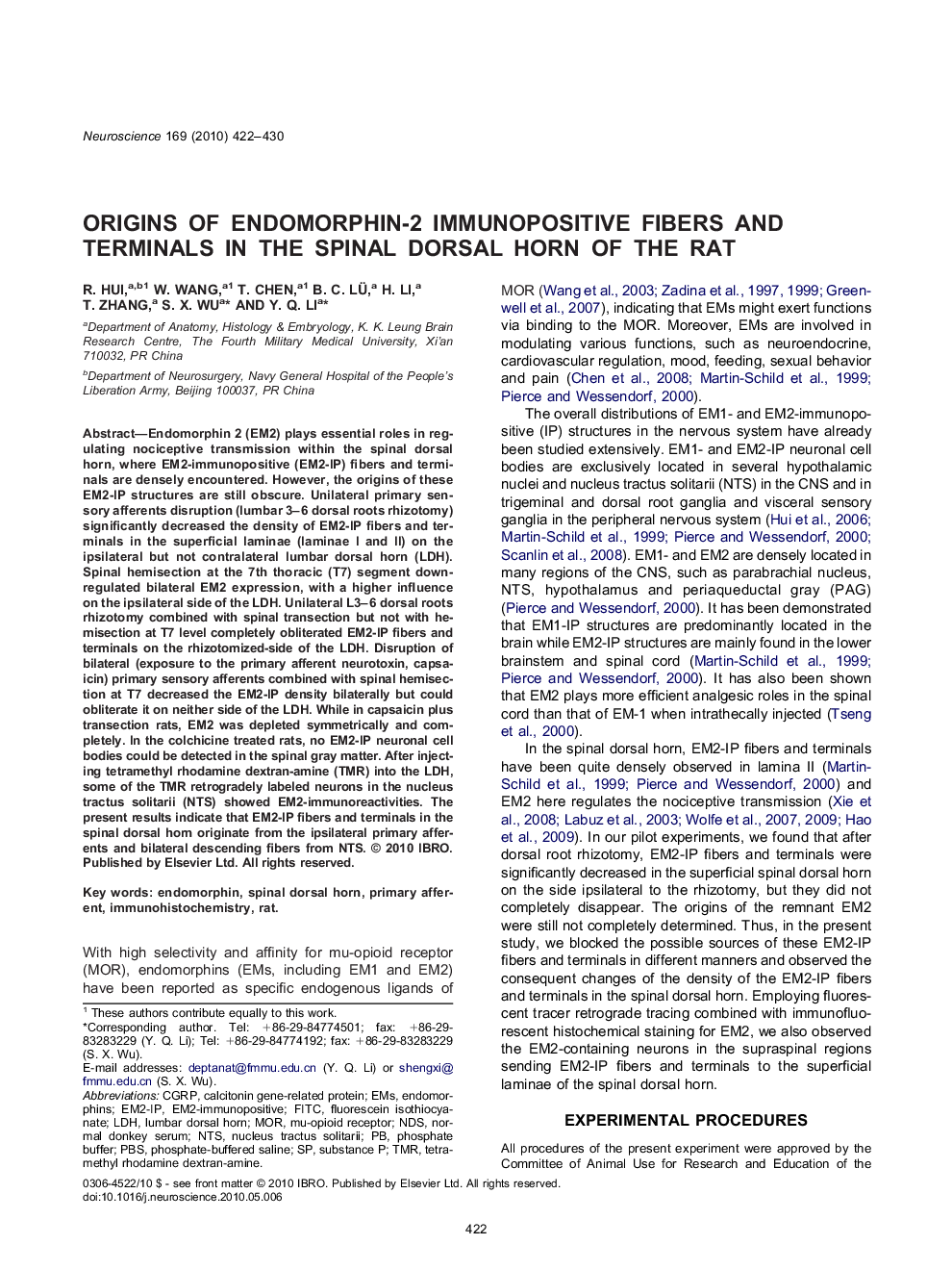| Article ID | Journal | Published Year | Pages | File Type |
|---|---|---|---|---|
| 4339442 | Neuroscience | 2010 | 9 Pages |
Endomorphin 2 (EM2) plays essential roles in regulating nociceptive transmission within the spinal dorsal horn, where EM2-immunopositive (EM2-IP) fibers and terminals are densely encountered. However, the origins of these EM2-IP structures are still obscure. Unilateral primary sensory afferents disruption (lumbar 3–6 dorsal roots rhizotomy) significantly decreased the density of EM2-IP fibers and terminals in the superficial laminae (laminae I and II) on the ipsilateral but not contralateral lumbar dorsal horn (LDH). Spinal hemisection at the 7th thoracic (T7) segment down-regulated bilateral EM2 expression, with a higher influence on the ipsilateral side of the LDH. Unilateral L3–6 dorsal roots rhizotomy combined with spinal transection but not with hemisection at T7 level completely obliterated EM2-IP fibers and terminals on the rhizotomized-side of the LDH. Disruption of bilateral (exposure to the primary afferent neurotoxin, capsaicin) primary sensory afferents combined with spinal hemisection at T7 decreased the EM2-IP density bilaterally but could obliterate it on neither side of the LDH. While in capsaicin plus transection rats, EM2 was depleted symmetrically and completely. In the colchicine treated rats, no EM2-IP neuronal cell bodies could be detected in the spinal gray matter. After injecting tetramethyl rhodamine dextran-amine (TMR) into the LDH, some of the TMR retrogradely labeled neurons in the nucleus tractus solitarii (NTS) showed EM2-immunoreactivities. The present results indicate that EM2-IP fibers and terminals in the spinal dorsal horn originate from the ipsilateral primary afferents and bilateral descending fibers from NTS.
